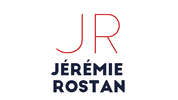Likewise, parents need to know how to become productively involved in their children’s education.
To guide both, the author proposed a model called the "Dual Navigation Approach" (DNA) and based on 6 meta-analyses that he conducted over the last 15 years. The name of the model comes from the “ two primary branches of parental-involvement and engagement, i.e., the school-based component and the home-based aspects. When these two components work together student education outcomes can be greatly enhanced.” More precisely, DNA points to “the importance of leaders emphasizing especially 10 components of involvement and engagement, 5 of which are home-based and the other 5 of which are school-based.” The former include an authoritative parental style (high expectations, supportive and informative communication, and household rules congruent with school rules and effectively enforced) as well as model behaviors (such as reading with children.) Authoritative parents give their children the best of both worlds: the high expectations and “push” of an authoritarian style paired with the appropriate support and “care” of a permissive one. As for school-based behaviors, they include participating in educational events (such as parent-teacher conferences), communicating effectively with educators, and forming an effective partnership with them. Such a unified strategy can materialize, e.g., by checking on homework all while avoiding disrupting interventions. Interestingly, the author notes that proper education actually requires to draw from community resources--i.e., to involve, beyond parents, all adults contributing to children’s learning, from cleaning and security crew to neighbors and nearby vendors. It does take a village... Source: William H. Jeynes (2018): A practical model for school leaders to encourage parental involvement and parental engagement, School Leadership & Management, 38:2, pp. 147-163
0 Comments
Your comment will be posted after it is approved.
Leave a Reply. |
|
Proudly powered by Weebly

